Waiting for Raif
En attendant Raif
Luc Côté and Patricio Henriquez
2022
| 150 min
Documentary
Arabic, French, English
Awards and Festivals
Official SelectionFestival du cinéma international en Abitibi-Témiscamingue, Rouyn-Noranda (2022)
Official SelectionRendez-vous Québec Cinéma (2023)
Official SelectionVictoria Film Festival, British Columbia (2023)
A Macumba Média Inc. and National Film Board of Canada co-production
Filmed over a period of eight years, Waiting for Raif tells the tragic tale of a family torn apart by the Saudi monarchy’s intransigence, as it follows Ensaf Haidar’s inspiring battle to free her husband, prisoner of conscience Raif Badawi. The documentary offers a privileged and moving look at the personal and political implications of the affair, providing an inside view of the challenges faced by a young refugee mother of three, both in her adopted home of Quebec and on the global stage.
Trailer
Poster
LONG SYNOPSIS
Waiting for Raif is the tragic tale of a family torn apart by the intransigence of an absolute monarchy. Shot over an eight-year period, the film tells the inside story of Ensaf Haidar’s inspiring fight to free her husband, the famous Saudi dissident Raif Badawi.
The Badawi affair has been in the news for a decade, sparking outrage around the world. The young blogger was accused of insulting Islam in writings criticizing the Saudi monarchy. In 2012, Badawi was sentenced by the regime to 10 years in prison and a thousand lashes—a barbaric punishment that provoked an international outcry. Over the course of his sentence, which was never reduced, a remarkable campaign for his release sprung up. It was led from abroad by a courageous woman of iron will: his wife, Ensaf Haidar.
From 2014 to 2022, award-winning filmmakers Patricio Henriquez and Luc Côté (You Don’t Like the Truth) followed Ensaf Haidar and the challenges she faced in fighting for Raif Badawi’s freedom. During that time, the charismatic young woman became a public figure on the global stage—a symbol of the battle for freedom of opinion. But the filmmakers focus primarily on her personal journey.
Ensaf arrived in Quebec as a refugee in 2013 and lives in the town of Sherbrooke. She’s dealt with all the hardships that come with being a newcomer raising her three children, Najwa, Tirad and Miriyam, alone. But while she was integrating into a new culture and learning a new language, Ensaf was also living through the pain of exile and separation. Day after day, she watched her children grow while their father was far away, with no idea when the family might be reunited. Month after month, she worried about her husband’s physical and mental health, knowing he was subject to cruel punishment in an overcrowded prison. Year after year, she clung to the hope that he would soon be freed, and refused to give up.
By participating in her daily life, the filmmakers captured her hopes and fears, witnessed her highs and lows, and heard about the pain of the present and her dreams for the future. The resulting film bears witness to the deep love between Ensaf and her children, the family’s process of gradually laying down roots in Canada—and their regular (and no doubt monitored) calls to Raif. The documentary also tells the story of how a woman who grew up in a kingdom where women must submit to male authority became determined to take full advantage of the freedom her new country offered, including running for office and embracing the cause of Quebec independence.
Ensaf finds a new “family” among her fellow Sherbrooke residents, who wholeheartedly adopted her and her cause, holding no less than 376 vigils in solidarity with Raif and helping to give her the strength she needed to fight. With the support of community members, including Amnesty International activists, she bravely speaks to leaders, media, universities and political institutions throughout the Western world. The filmmakers also cast a critical eye on the many issues behind the scenes of the Badawi affair, highlighting the contradictions of the Canadian government, which claims to defend human rights in Saudi Arabia while delivering arms used to suppress the freedom of the kingdom’s residents and fuel the catastrophic war in Yemen.
The conditions of Raif Badawi’s recent release resoundingly demonstrate the failure of Western diplomacy when it comes to human rights in Saudi Arabia. Badawi served the full length of his sentence, and is forbidden from speaking publicly or travelling outside the kingdom until 2032. Waiting for Raif offers a privileged and moving look at the personal and political implications of the Badawi affair, and shows that Ensaf’s fight is far from finished.
SHORT SYNOPSIS
Filmed over a period of eight years, Waiting for Raif tells the tragic tale of a family torn apart by the Saudi monarchy’s intransigence, as it follows Ensaf Haidar’s inspiring battle to free her husband, prisoner of conscience Raif Badawi. Accused by the regime of insulting Islam, in 2012 he is sentenced to 10 years in prison and a thousand lashes—a barbaric punishment that provokes international outrage. Throughout his imprisonment, Ensaf, who arrived in Quebec as a refugee in 2013, leads a remarkable campaign for his freedom, with courage and determination. Year after year, she watches her children grow, far from their father, without knowing when the family might be reunited. The film offers a privileged and moving look at the personal and political implications of the Badawi affair, lays bare the West’s contradictions with respect to Saudi Arabia, and follows the challenges faced by a young woman both in her adopted land and on the global stage.
ONE-LINER
Filmed over a period of eight years, Waiting for Raif tells the tragic tale of a family torn apart by the intransigence of an absolute monarchy, bringing us the inside story of Ensaf Haidar’s inspiring battle to free her husband, renowned prisoner of conscience Raif Badawi.
Interview with Luc Côté and Patricio Henriquez
Tell us about the origins of the project. How did you first meet Ensaf Haidar?
Luc Côté: I sometimes do work for Amnesty International, and they asked me to shoot an interview with a refugee who had recently arrived in Sherbrooke. It turned out to be Ensaf Haidar, and in fact that interview wound up being the first interview we see with Ensaf, at the start of the film. Five or six months later, I went back to visit the family for another Amnesty project: a letter from Ensaf’s son, Doudi (Tirad), to his father. In January 2015, when it came out that Raif was to be flogged, Patricio, who knew that I knew Ensaf and her children, talked to me about directing a film about them. The project became our second collaboration.
When you started shooting, you couldn’t have known that Raif Badawi was going to remain imprisoned for the full length of his sentence. How did the project evolve over the course of eight years?
Patricio Henriquez: Right from the start, I figured it would be a project with a long timeline, given the issue of prisoners of conscience in an anachronistic absolute monarchy, and the state of the rights of women, which was even worse at the time. At the same time, even in the worst-case scenario, we thought there was a chance Raif would be freed, because we could see how the campaign to free him, led by this young woman, was growing. We couldn’t have predicted anything, but the story wrote itself through ongoing events (like the Khashoggi affair). We certainly didn’t cover everything, but there were a number of issues we had to address. Saudi Arabia is complex and fascinating!
L.C.: It was a process of evolution. The film constantly changed, and we allowed ourselves to be carried forward by Ensaf’s story and the political realities unfolding before us. This would have been a completely different film if we had ended it in 2015! We had to follow the story where it took us, both on a personal and political level.
Ensaf fights for her husband’s release and for secularization in Saudi Arabia, but you touch on broader issues in the film—notably the ties between Canada and the Saudi monarchy. Why was it important for you to address these questions?
L.C.: At first, the scope of our research was very broad, because we didn’t know how we were going to incorporate the personal story with a macro perspective. When we got to the editing stage, we had an enormous amount of material, but some choices were clear. The story takes place in Canada, so we had to talk about the sale of the famous jeeps. It’s also the story of a woman, so we wanted to talk about women’s rights.
P.H.: Right from the start, in our proposal, we said we did not want this to “just” be a film about a dramatic family story—even though that drama is very important. We wanted a storyline that explores the context of the affair and the international situation. At the time, there was criticism of the Saudi monarchy, but it was not discussed all that much. We wanted the personal story to be set within a political analysis.
The film ends with Raif’s release, but the battle is not over. What are your hopes, both as filmmakers and as people close to Ensaf?
P.H.: The truth is that we were looking for a way to end the film. When we learned that Raif had been released, we knew that had to be the end, both for logistical and editorial reasons. But, unfortunately, the family’s fight to be reunited is still ongoing.
L.C.: We were also constantly getting privileged information from various institutions (the European Parliament, the Canadian parliament, Raif’s lawyers, and so on), as a result of which we could more or less see the end was coming. As for our hopes today, that’s hard to say. Things are so unpredictable. Of course we hope that the family members can be reunited in person. They want to be together so badly. But there’s no way of knowing if that might happen next month, next year, or in 10 years.
P.H.: We are probably more pessimistic today than we were when we started shooting, with all that’s gone on. There are the consequences of the war in Ukraine, with many leaders renewing their ties with Mohammed bin Salman. A lot of countries are “prisoners” of Saudi Arabia, so the monarchy can do whatever it wants. All the West’s talk of human rights is very hypocritical.
This is your second collaboration on a feature documentary, following You Don’t Like the Truth. How do you complement each other, and can we look forward to more collaborations in the future?
P.H.: We are very good friends. I am an immigrant, my friendships and social life in Quebec have come mostly through my professional milieu, and I’m grateful! We loved working together on the film about Omar Khadr (You Don’t Like the Truth: 4 Days Inside Guantanamo).
L.C.: I would like to make a film, not with Patricio but about Patricio: his journey as a refugee, his departure from Chile, his arrival in Canada… It’s an incredible story!
P.H.: … But he doesn’t have authorization for that! (Laughs.)
L.C.: To be more serious, Patricio is really strong on the political side of things, while I tend more towards the human side. As a result, we were able to find a good balance between the personal and the political in the film.
Excerpts
50th Vigil with David Goudreault
Ensaf “My face is my identity”
Images
Loading...
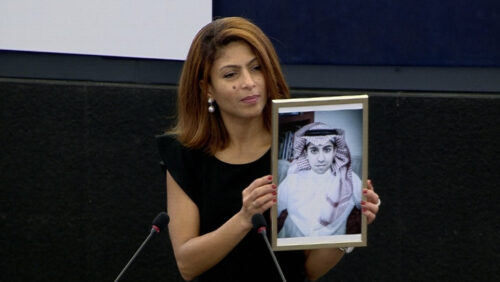
Download
Loading...
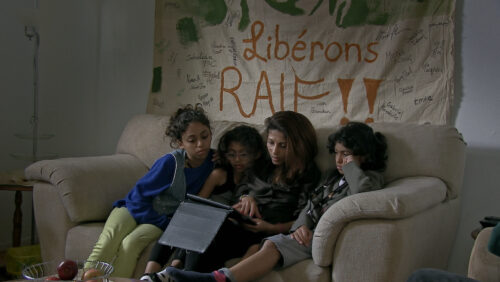
Download
Loading...

Download
Loading...
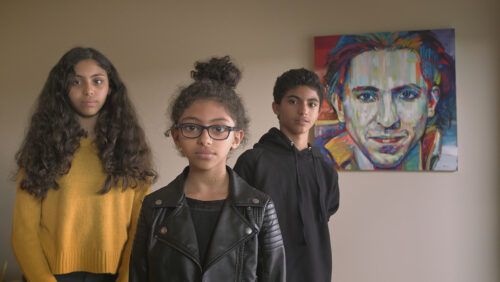
Download
Loading...
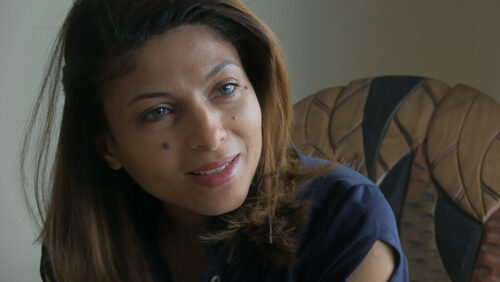
Download
Loading...
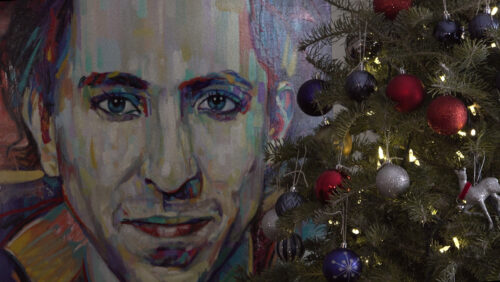
Download
Loading...
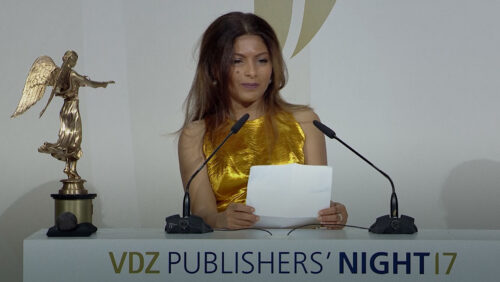
Download
Loading...

Download
Loading...
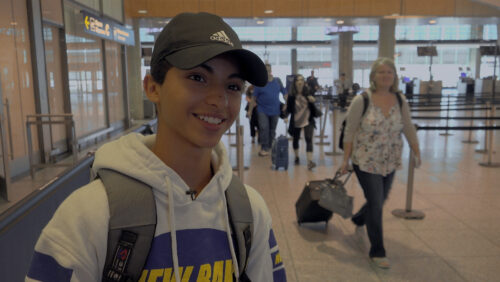
Download
Loading...
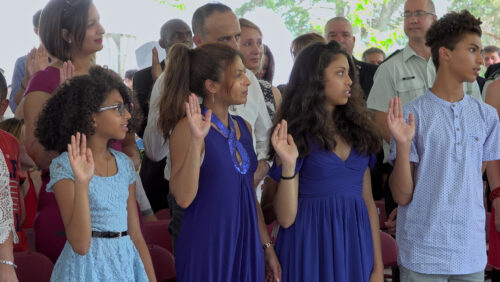
Download
Loading...
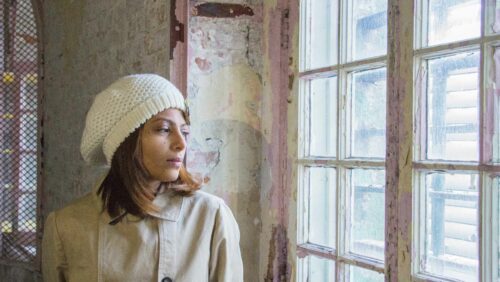
Download
Loading...
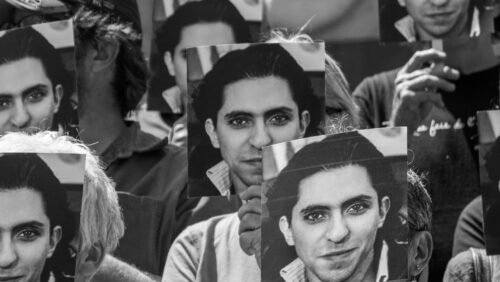
Download
Loading...
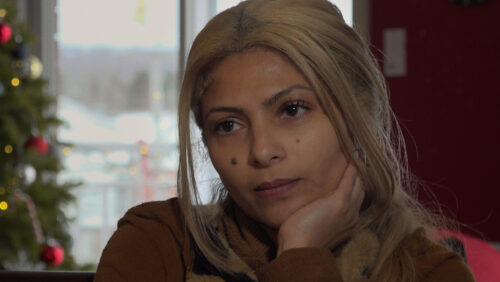
Download
Loading...
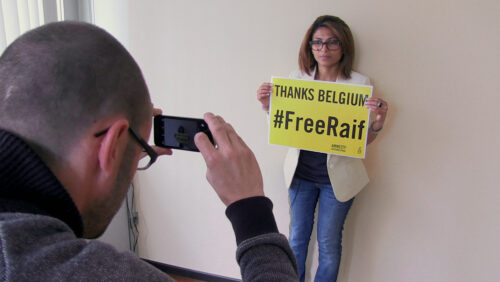
Download
Loading...
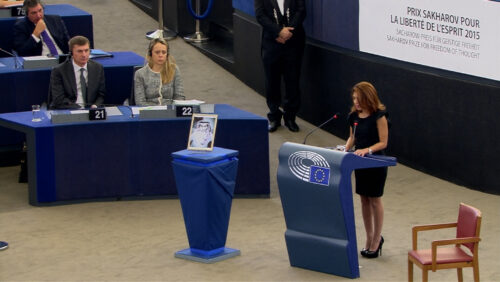
Download
Team
Luc Côté
Director and Producer (Macumba Média)
Photo
Patricio Henriquez
Director and Producer (Macumba Média)
Photo
Colette Loumède
Producer and Executive Producer
Photo
Photo : NFB
Nathalie Cloutier
Executive Producer
Photo
Photo : Valérie Sangin
Credits
A film produced, written and directed by
Luc Côté
Patricio Henriquez
Produced by
Colette Loumède (NFB)
Editing
Andrea Henriquez
With
Ensaf Haidar
Najwa Badawi
Tirad (Doudi) Badawi
Miriyam Badawi
Katya Arbour
Caroline Custeau
Suzanne Cayouette
Monia D’Amours
Mireille Elchacar
Sandra Hallé
Jane Hospes
Sylvie Joubert
Yenny López
Richard-Gilles Perreault
The citizens of the City of Sherbrooke, Quebec
Images
François Beauchemin
Joël Bertomeu
Luc Côté
Bruno Fraser
Patricio Henriquez
Étienne Roussy
Location Sound
Tiago McNicoll-Castro-Lopes
Nils Caneele
Luc Côté
Julien Fréchette
Mélanie Gauthier
Patricio Henriquez
Research
Pascale Bilodeau
Luc Côté
Patricio Henriquez
Friederike Venus (Berlin)
Research – Archives
Nancy Marcotte
Graphic Design
Mélanie Bouchard (NFB)
Alain Ostiguy (NFB)
Online Editing and Colourization
Yannick Carrier (NFB)
Original Music
and Musical Direction
Robert Marcel Lepage
Assisted by
Olivier Béliveau
Samuel Desrosiers
Pierre-Yves Martel
Andrew Wells-Oberegger
Musicians
Olivier Béliveau – Guitar, Percussion
Guillaume Bourque – Bass clarinet
Samuel Desrosiers – Guitars, Bass
Sheila Hannigan – Cello
René Lussier – Guitars
Pierre-Yves Martel – Treble viol, Lap steel guitar
Marilène Provencher-Leduc – Flute
Andrew Wells-Oberegger – Oud and percussion
Foley
Stéphane Cadotte
Foley Recording
Geoffrey Mitchell (NFB)
Sound Design and Editing
Claude Langlois
Re-recording
Jean Paul Vialard (NFB)
Produced with the financial participation of
Société de développement des entreprises culturelles – Québec
Film and Television Tax Credit – Québec
Rogers Documentary Fund
Telefilm Canada
Canada Media Fund
Produced with the collaboration of
Radio-Canada
Julia Lauzon
Director, Informational Documentaries
Marjolaine Mineau
Senior Manager, Informational Documentaries
Additional Images
Marc Aderghal
Tirad (Doudi) Badawi
Rafaël Barnwell
Rénald Bellemare
Maxime Côté
Sylvestre Guidi
Christian Paré
Production Assistants
Raphaël Fraser
Sarah-Ève Martin
Editing Assistants
Lea Henriquez
Vincent Lacombat
Technical Support – Editing
Marie-Josée Gourde (NFB)
Pierre Dupont (NFB)
Isabelle Painchaud (NFB)
Patrick Trahan (NFB)
Translation
Meriem Achour Bouakkaz (Arabic)
Eli Jean Tahchi (Arabic)
Jennifer Hille (German)
Translation and Subtitling
Trans & Sub Coop
Interpreter
Mireille Elchacar (Arabic)
Technical Director
Denis Boisvert
Production Manager
Koussay Hamzeh
Administrator
John Chretien
Legal Advisor
David Langis
Lussier & Khouzam
Special thanks to
Evelyne Abitbol
Ali Adubisi
Georges Amar
Jérémie Battaglia
Bachir Bensaddek
Denis Boisvert
Laurence Branchereau
Kristen Breitweiser
David Carl
Paul Carvalho
Steven Chase
Pierre Conessa
Michel Corriveau
Jocelyn Coulon
Kamel Daoud
Ronald J. Deibert
Serge Denis
Halima Elkhatabi
Michel Giroux
Michel Gretry
Michel Grou
Denis Jacqmin
Grégory Lassus-Debat
Colette Lelièvre
Vincent Letellier
Roxane Loumède
Mira Mailhot
Maya May
Luc Mampaey
André Pâquet
Jean Pelletier
Carole Poliquin
Anne Sainte-Marie
Michel St-Pierre
Oana Suteu Khintirian
Daniel Turp
Béatrice Vaugrante
Amnesty International Canada (French)
Avaaz – The World in Action
Lawyers Without Borders Canada
Citizen Lab
Group for Research and Information on Peace and Security (GRIP)
La Tribune
Pour les droits des femmes du Québec
The Globe and Mail
Thanks to
Élyes Ammar
Orlando Arriagada
Robert Audet
Claude Bastien
Djemila Benhabib
Danielle Bérard
Sophie Bissonnette
André Caron
Hugues Chaker
Yanik Cloutier
Jean Côté
Yvon Côté
Irwin Cotler
Sylvie Deschamps
Paule Dion
Éli Dubois
Marie-Claude Dupois
Gabrielle Dupont
Olivier Dulude
Talal Elmir
Lucie Fiset
Jonathan Fournier
Joé Grantham-Charbonneau
Léa Grantham-Charbonneau
Sandrine Guillot
Amélie Hardy
Heiko Hei
Gabriel Henriquez
Laura Isabelle
Maude Lambert
Francine Landry
Abraham Lifshitz
Audrey Nantel-Gagnon
Ximena Ortiz
Pascal Paradis
Jocelyne Perrier
Geneviève Rochette
Steve Roy
Anne-Marie Saint-Cerny
Nina Scholz
Christoph Scott
Brandon Silver
José St-Jacques
Yanic St-Jacques
Nancie Tanguay
Marie-Pierre Tardif
Karen Tessel
Carmen Torres
Mireille Tremblay
All the people who participated in the 376 vigils held in the City of Sherbrooke
ArchAngel Films
École primaire Larocque
École secondaire de la Montée
École de conduite ConduiPro Estrie
Provigo Larouche Fleurimont – Sherbrooke
Restaurant Le sultan – Sherbrooke
Séminaire de Sherbrooke
Excerpt from the slam poem SALUT RAIF
with the kind permission of David Goudreault
Portraits of Raif appear in the film
with the kind permission of the artist,
Louis Robichaud
Visual Archives
AFP
Amnesty International
Bell Media
Council on Foreign Relations
Marcel Dufour
Europe 1
France Médias Monde
Getty Images
Global News
The Canadian Press
Les Films Adobe Inc.
Les Prix de la laïcité
London Free Press, a division of Postmedia Network Inc.
Middle East News
North Superior Publishing Inc. / Scott Alan Sumner
Office of Video – U.S. Department of State
Pond5
Screenocean / Reuters
Audiovisual services of the European Parliament (Strasbourg)
Société Radio-Canada
Tout le monde en parle / La Clique du Plateau /
Radio-Canada / Ardisson & Lumières France
Jan van Bwekkum
VDZ Publishers’ Night 17, Berlin
Photo Archives
Ensaf Haidar, private collection
Lagardère Media News
The following archival clips have been included in this film
based on the principle of fair dealing.
The filmmakers would like to acknowledge the courageous people who secretly filmed
some of the sequences included in this documentary.
“Briman-Djeddah Prison” / YouTube
“Flogging of Raif Badawi” / YouTube
“Public Hangings” / YouTube
“Beheading in Mecca” / LiveLeak – YouTube
“Canadian Light Armoured Vehicles” / YouTube
“Cockerill 3000 Series Turrets and Cannons” Promotional Video / YouTube
“Interview with Raif Badawi’s Father” / YouTube
“Interview with Samar Badawi” / World Talks – YouTube
“Saudi Arabian Women Allowed to Drive” / Arab News – YouTube
“Canadian Military Vehicles in Yemen” / Yemen Wrath – YouTube
NFB Team
Marketing Manager
François Jacques
Marketing Coordinator
Émilie Ryan
Administrator
Sia Koukoulas
Studio Coordinators
Gabrielle Dupont
Stéphanie Lazure
Senior Production Coordinators
Joëlle Lapointe
Chinda Phommarinh
Technical Coordinators
Mira Mailhot
Esther Viragh
Line Producer
Mélanie Lasnier
Executive Producers
Colette Loumède
Nathalie Cloutier
Luc Côté
Patricio Henriquez
Produced by
Macumba média II
In co-production with
the National Film Board of Canada
nfb.ca
Waiting for Raif
© 2022 Macumba média II inc. and the National Film Board of Canada
Media Relations
-
About the NFB
For more than 80 years, the National Film Board of Canada (NFB) has produced, distributed and preserved those stories, which now form a vast audiovisual collection—an important part of our cultural heritage that represents all Canadians.
To tell these stories, the NFB works with filmmakers of all ages and backgrounds, from across the country. It harnesses their creativity to produce relevant and groundbreaking content for curious, engaged and diverse audiences. The NFB also collaborates with industry experts to foster innovation in every aspect of storytelling, from formats to distribution models.
Every year, another 50 or so powerful new animated and documentary films are added to the NFB’s extensive collection of more than 14,000 titles, half of which are available to watch for free on nfb.ca.
Through its mandate, its stature and its productions, the NFB contributes to Canada’s cultural identity and is helping to build the Canada of tomorrow.